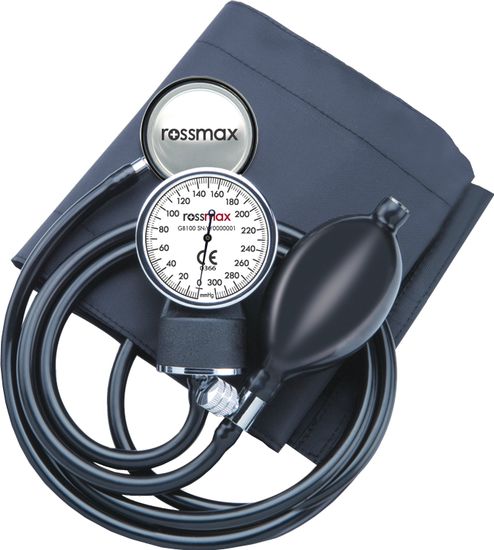Sphygmomanometer
A sphygmomanometer is a device that measures blood pressure. It is composes of an inflatable rubber cuff, which is wrapped around the arm. A measuring device indicates the cuff's pressure. A bulb inflates the cuff and a valve releases pressure. A stethoscope is used to listen to arterial blood flow sounds.
As the heart beats, blood forced through the arteries cause a rise in pressure, called systolic pressure, followed by a decrease in pressure as the heart's ventricles prepare for another beat. This low pressure is called the diastolic pressure.
The sphygmomanometer cuff is inflated to well above expected systolic pressure. As the valve is opened, cuff pressure (slowly) decreases. When the cuff's pressure equals the arterial systolic pressure, blood begins to flow past the cuff, creating blood flow turbulence and audible sounds.
Using a stethoscope, these sounds are heard and the cuff's pressure is recorded. The blood flow sounds will continue until the cuff's pressure falls below the arterial diastolic pressure.
The pressure when the blood flow sounds stop indicates the diastolic pressure.
Systolic and diastolic pressures are commonly stated as systolic 'over' diastolic. For example, 120 over 80. Blood flow sounds are called Korotkoff sounds.
There are three types of sphygmomanometers.
Digital sphygmomanometers
are automated, providing blood pressure reading without needing someone to operate the cuff or listen to the blood flow sounds.
However digital types are less accurate. Some healthcare providers use digital for screening but use manual sphygmomanometers to validate readings in some situations.
Manual sphygmomanometers consist of aneroid (dial) and mercury (column) devices. Operating these aneroid and mercury devices is nearly the same, except that aneroid devices require periodic calibration.
Click me to know the three types of Sphygmomanometer. To purchase this commodity and other Hospital or Medical equipments contact the MD of the company with
+2348034027838
+2348069701128




Enter your commentary...Thanks
ReplyDelete